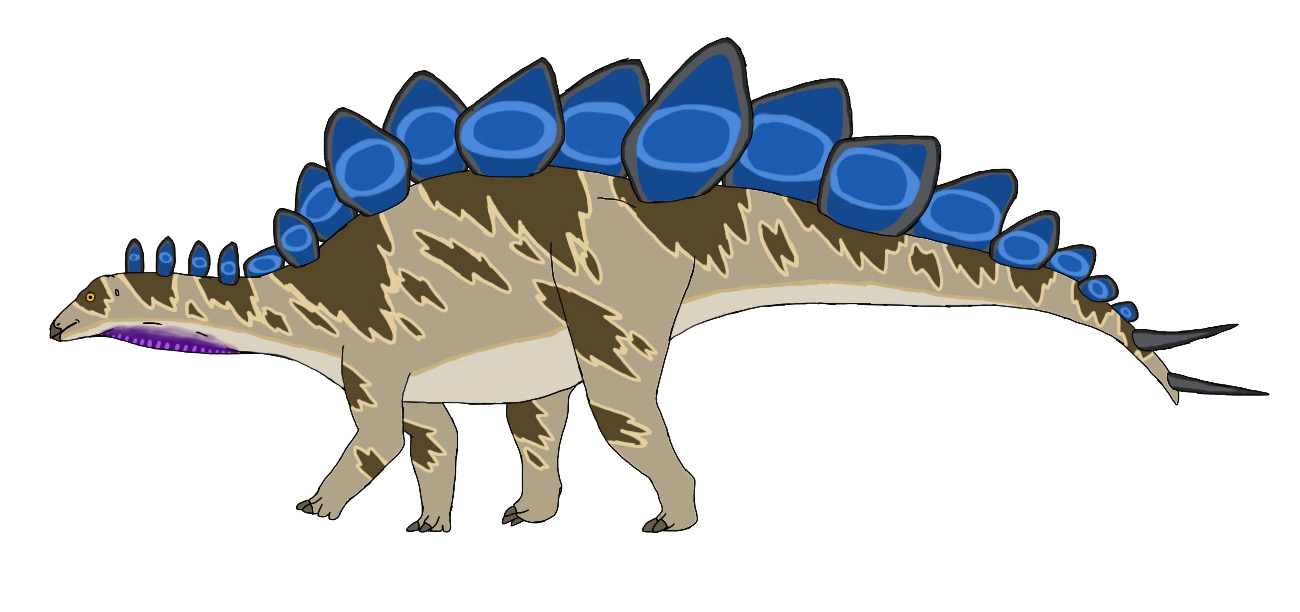Stegosaurus

|
|
|
Another highly popular dinosaur, Stegosaurus was the frst-discovered stegosaur. It is immediately recognizable from the tall broad plates on its back, arranged in staggered rows. At first the plates were thought to lay over the body like roof shingles, but later specimens that preserved the plates' position in life proved this wrong. No two individuals have plates of the same shape. Stegosaurus has a fairly long neck, a head low to the ground, and a long, flexible tail. The tail culminates in a thagomizer, an arrangement of spikes used for defense (we've found Allosaurus fossils with wounds that perfectly match these spikes). In S. stenops the thagomizer consists of four spikes. Stegosaurus probably ate low-growing woody plants. Its bite force is on par with modern herbivorous mammals such as sheep. It is a rather slow animal, with a maximum speed of only 4 miles per hour, but it can turn on a dime. Its tail is flexible enough to swing a full 180 degrees. And it does not have a second brain in its hips. The function of the plates has been debated for many years. Hypotheses include defense, display, and thermoregulation. Currently it's thought they were used primarily for display. Not only are giant flat plates great for showing off color, they can potentially make it look larger to a predator. Our Stegosaurus can be found in the Gladiators of the Mesozoic exhibit. The trio are rather docile and human-friendly. Take a behind-the-scenes tour to get up close! |
Scientific name Location Time Length Diet |